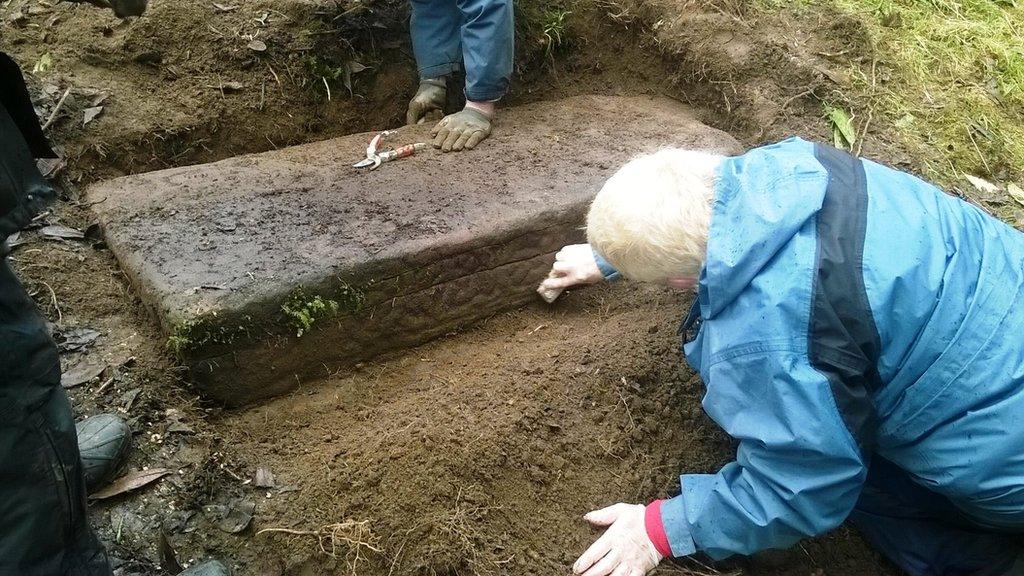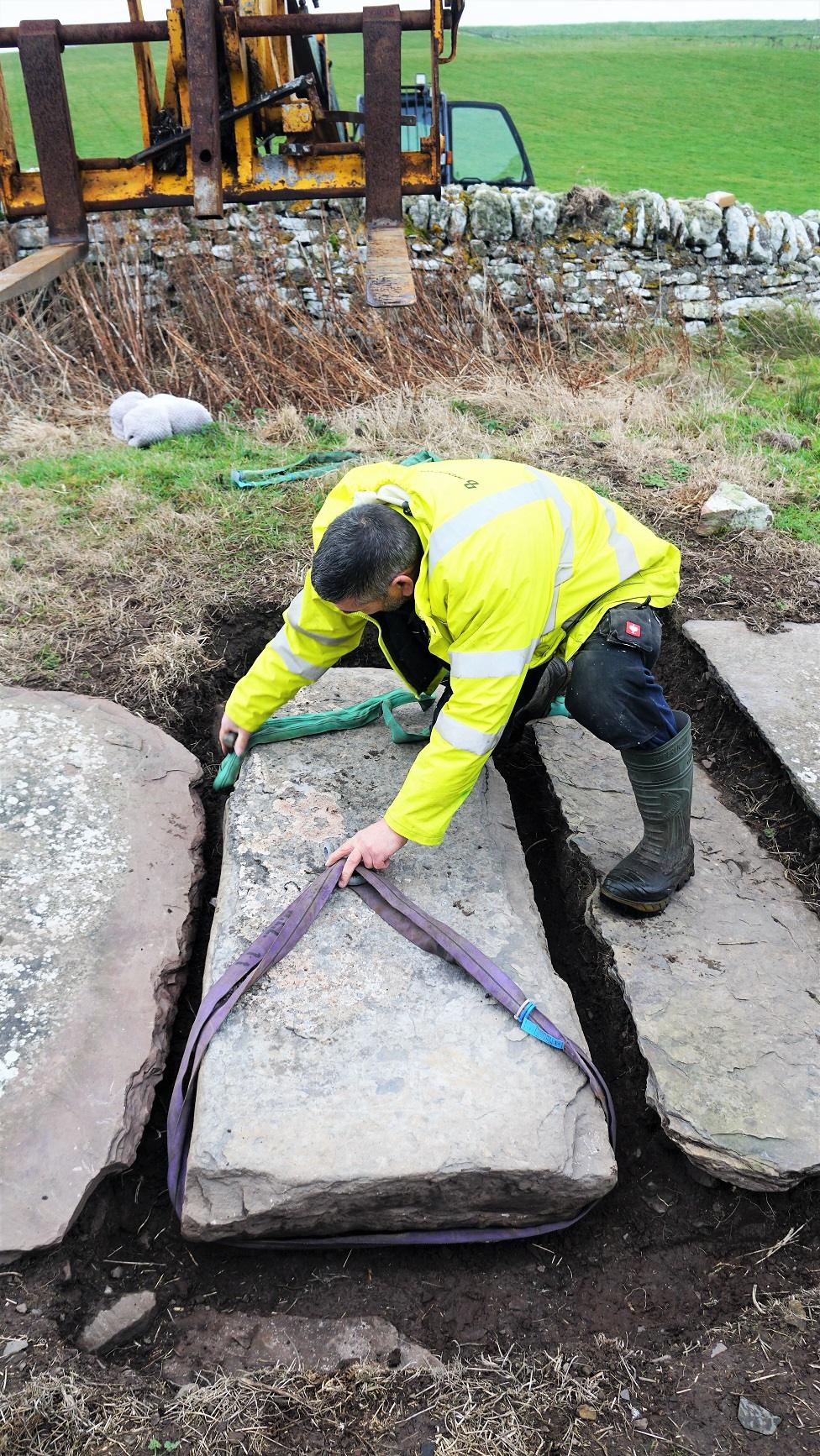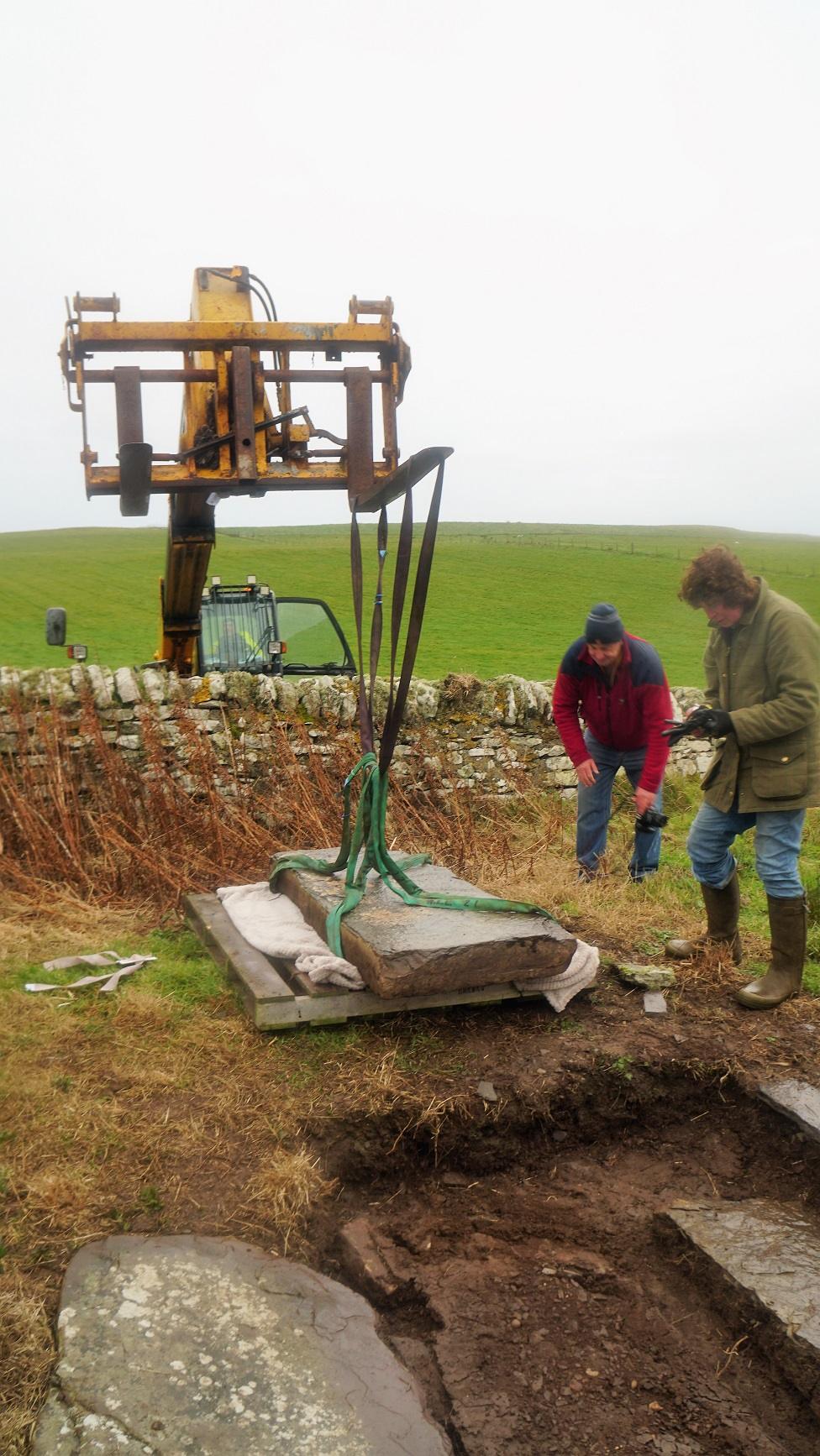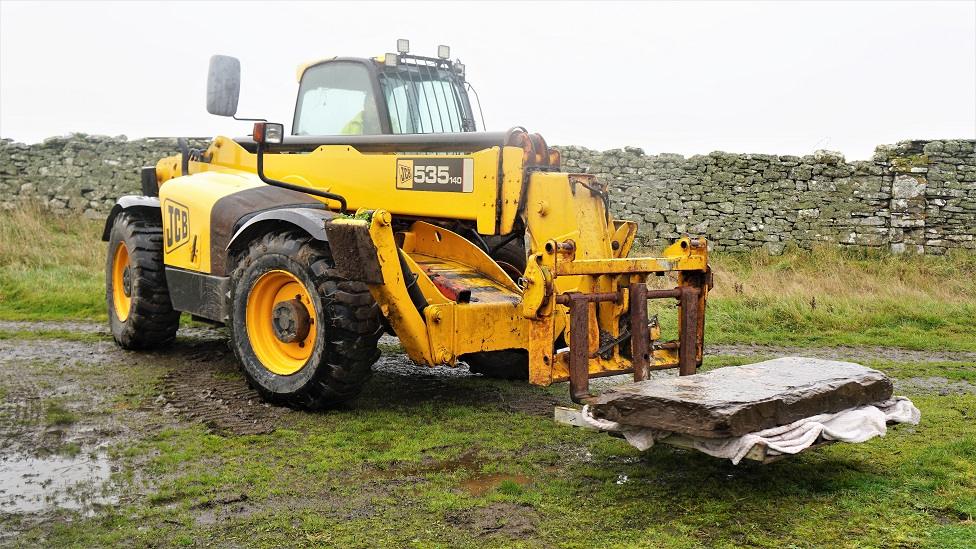Pictish stone discovered in Highland cemetery
- Image source, DGS
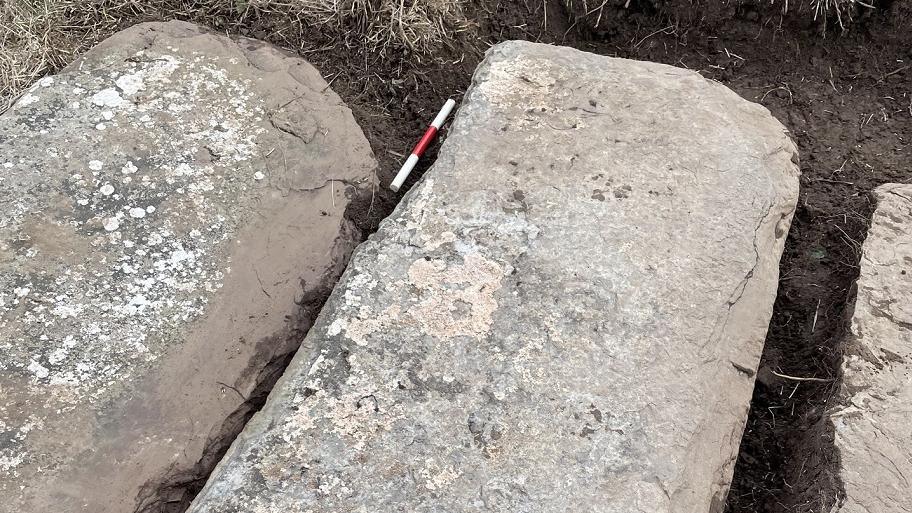
Image caption, A carved Pictish stone, centre, has been discovered in a graveyard in Caithness
1 of 5
At a glance
Experts believe a carved stone found at Ulbster, Caithness, shows early examples of Pictish art
The stone has been removed to be cleaned and studied
It was discovered by a woman researching her family history
The stone could date to around the 6th Century
- Published
A carved stone discovered in Caithness could help archaeologists shed new light on the development of Pictish symbols.
A woman researching her family history spotted the partly covered stone while looking at graves in a cemetery in Ulbster.
The stone is thought to date from about the 6th Century and has been taken to a safe place to be cleaned and studied.
Roland Spencer Jones, of Yarrows Heritage Trust, said the stone could be carved with early examples of Pictish art.
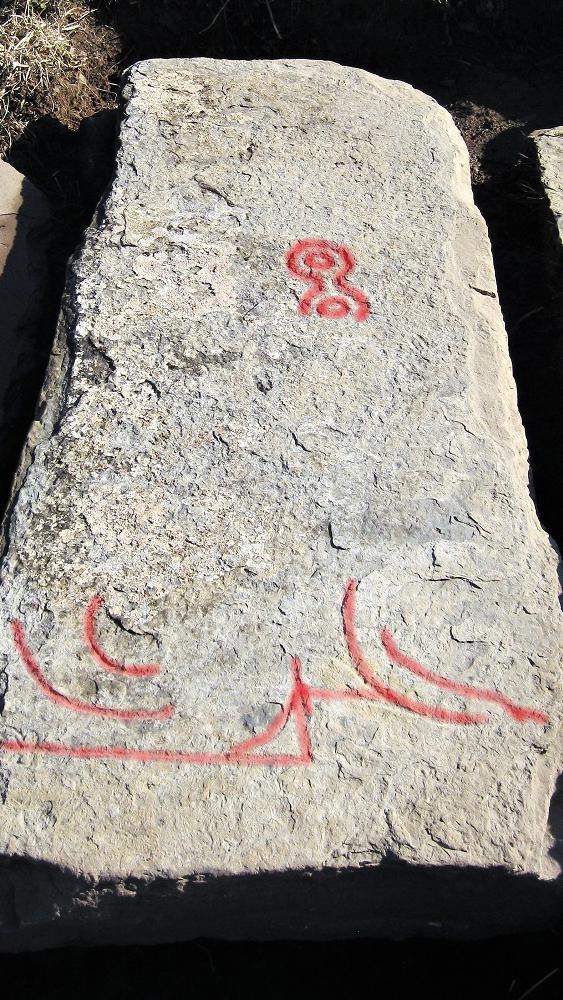
Some of the symbols, marked in red, on the stone
Mr Spencer Jones said: "Pictish art is a bit like Egyptian hieroglyphs with its symbols and pictures of objects.
"Even now we don't really know what those symbols mean, and how they were used so this stone is really at the very beginning of that tradition of carving."
He said the stone had symbols seen frequently in Pictish art and known to experts as a "mirror" and another as a "z rod".
Mr Spencer Jones added: "Every now and then a new Pictish stone appears, sometimes a whole entire magnificent one, sometimes just a fragment.
"Each of them tells a story.
"For a Pictish art historian this adds yet another piece to the complicated jigsaw that is the world of Pictish art."
The Picts created intricately decorated standing stones and also constructed impressive hill forts to defend themselves against rival tribes and invaders.
They battled against the Romans, Angles and the Vikings.
In 2019, another Pictish stone was found at a cemetery near Dingwall. The stone had been used as a grave marker in the 18th Century.
Related topics
- Published7 March 2022
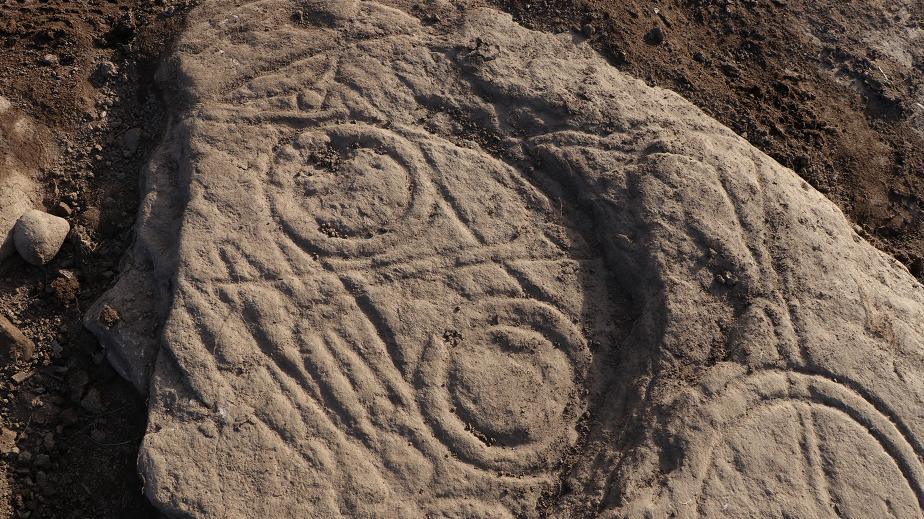
- Published12 December 2020

- Published23 August 2019
